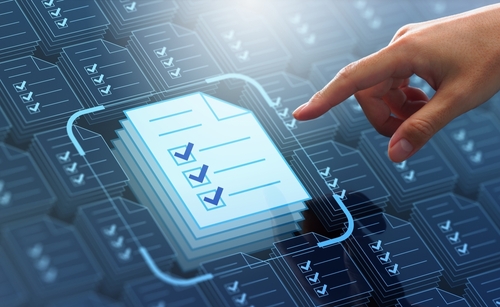International money transfers are an essential service for sending funds globally, but they often come with questions about the required documentation. Whether you’re paying for a major purchase, supporting loved ones abroad, or settling a business transaction, having the right paperwork is crucial to ensure your large transfer goes smoothly.
This guide will walk you through everything you need to know about the documents typically required for large international money transfers. By the end, you’ll feel confident and prepared for your next transaction.
Why Documentation Is Necessary for Large Transfers
Larger transactions typically involve stricter regulations because they are often flagged for anti-money laundering (AML) and countering the financing of terrorism (CFT) procedures. Financial institutions are required to verify your identity, the origin of funds, and the purpose of the transfer to comply with international and local regulations. Having the correct documents on hand ensures compliance with these requirements and prevents delays.
Documents You Need for Large International Money Transfers
The exact documents needed may vary by financial institution, country, and transfer amount, but the following are common requirements:
1. Proof of Identity
A valid government-issued photo ID is crucial. This ensures the financial institution can verify your identity and comply with Know Your Customer (KYC) regulations. Acceptable documents typically include:
- Passport
- Driver’s license
- National ID card
Some providers may also accept other forms of ID, but these are the most commonly requested.
2. Proof of Address
To verify your residence, most institutions require an official document that includes your name and address. Examples include:
- A recent utility bill (electricity, water, or gas)
- Bank or credit card statements
- A rental agreement or lease
Ensure the document is dated within the last 3–6 months and contains accurate, legible information.
3. Proof of Income or Funds
For large transfers, financial institutions will need to confirm the source of your funds. This is often required to comply with AML laws. Here’s what you may need to provide:
- Bank statements showing sufficient funds in your account
- Pay stubs or salary slips
- Tax returns or proof of property sale (if applicable)
- Documentation from a loan disbursement (if using borrowed funds)
4. Details of the Recipient
The recipient’s information must be clear and accurate to ensure the transfer is processed without complications. This typically includes:
- Full name (as it appears on their bank account)
- Bank account details, including the International Bank Account Number (IBAN) and SWIFT/BIC code
- Physical address and contact information
5. Transfer Purpose Documentation
Some financial institutions will ask for details on why you’re sending the funds, especially for high-value transfers. Accepted documents may include:
- An invoice (for business-related payments)
- A property sale agreement or mortgage papers
- A letter explaining personal transfers (e.g., family support or tuition payments)
6. Additional Verification Documents
Depending on the receiving country and transfer amount, additional documents might be required. For example:
- Business registration documents (if the transfer is business-related)
- Import/export licenses (for trade-related payments)
- Tax compliance certificates
It’s best to check with your transfer provider beforehand to ensure you have all required documents ready.
Tips for a Smooth Transfer
Even when you have all the necessary documents, following these tips can help ensure a hassle-free transfer:
Double-Check Details
Make sure all recipient information—including their name and bank account number—is entered correctly. Errors can delay the process and may lead to additional fees.
Understand Country-Specific Requirements
Certain countries have unique regulations for inbound or outbound money transfers. Research the destination country’s rules or consult your provider for additional guidance.
Choose a Reliable Provider
A trustworthy service provider simplifies the process while keeping your funds secure. Look for one that complies with international regulations, offers competitive rates, and has an excellent reputation for reliability.
Keep Your Documents Handy
Some institutions may request additional documentation during the transfer process, especially for high-value amounts. Keeping your documents organized and accessible can save time and reduce stress.
Monitor Transfer Limits
Each provider has its own limits for daily or one-time transfers. If your transfer exceeds their threshold, additional documentation or alternative options may be necessary.
Frequently Asked Questions
Do all money transfer services require the same documents?
No. Requirements vary depending on the provider, country, and transfer amount. For small transfers, basic identity verification may be sufficient. For larger transfers, you can expect additional documentation.
How long does the document verification process take?
Verification depends on your provider. Some complete the process in minutes, while others may take 1–3 business days. To avoid delays, submit all requested documents promptly.
Can I send money without providing proof of income?
For large transfers, proof of income or the source of funds is typically mandatory to comply with AML regulations. Small transfers may not require this documentation.
What happens if I fail to provide the required documents?
Failure to provide the necessary paperwork may result in your transfer being paused or declined. Additionally, some providers may blacklist future transactions until compliance is achieved.
Are digital copies of documents acceptable?
Most providers accept clear, scanned copies of your documents. However, some may require in-person verification or notarized copies for large transfers.

